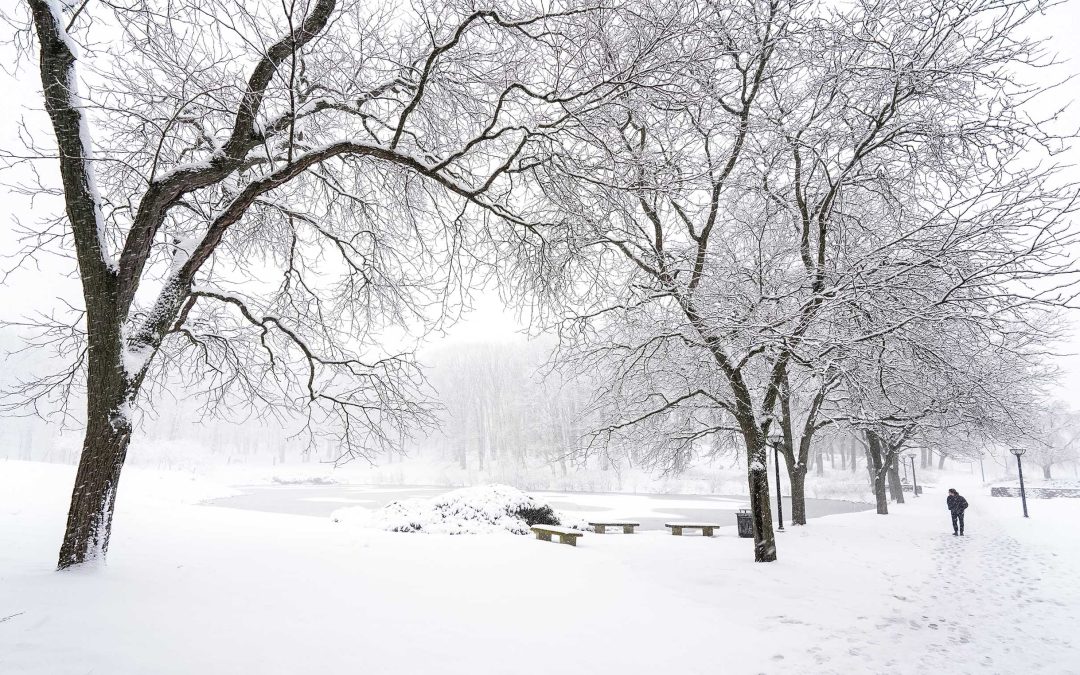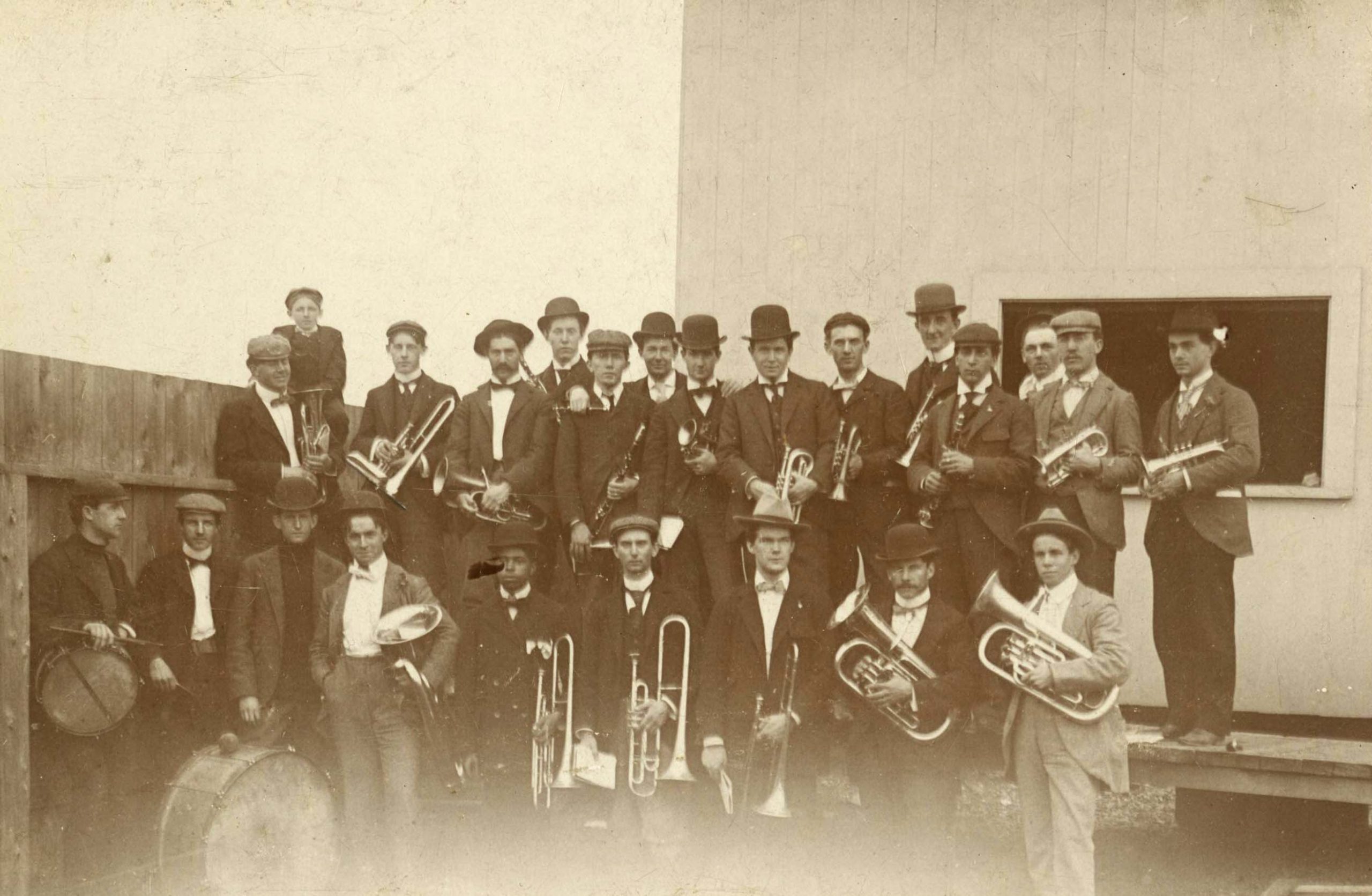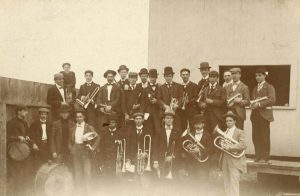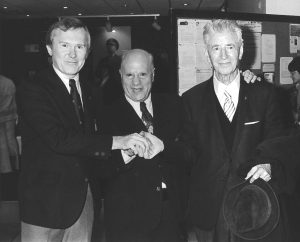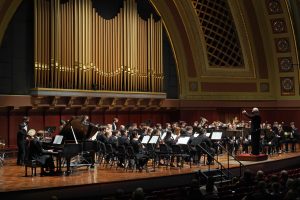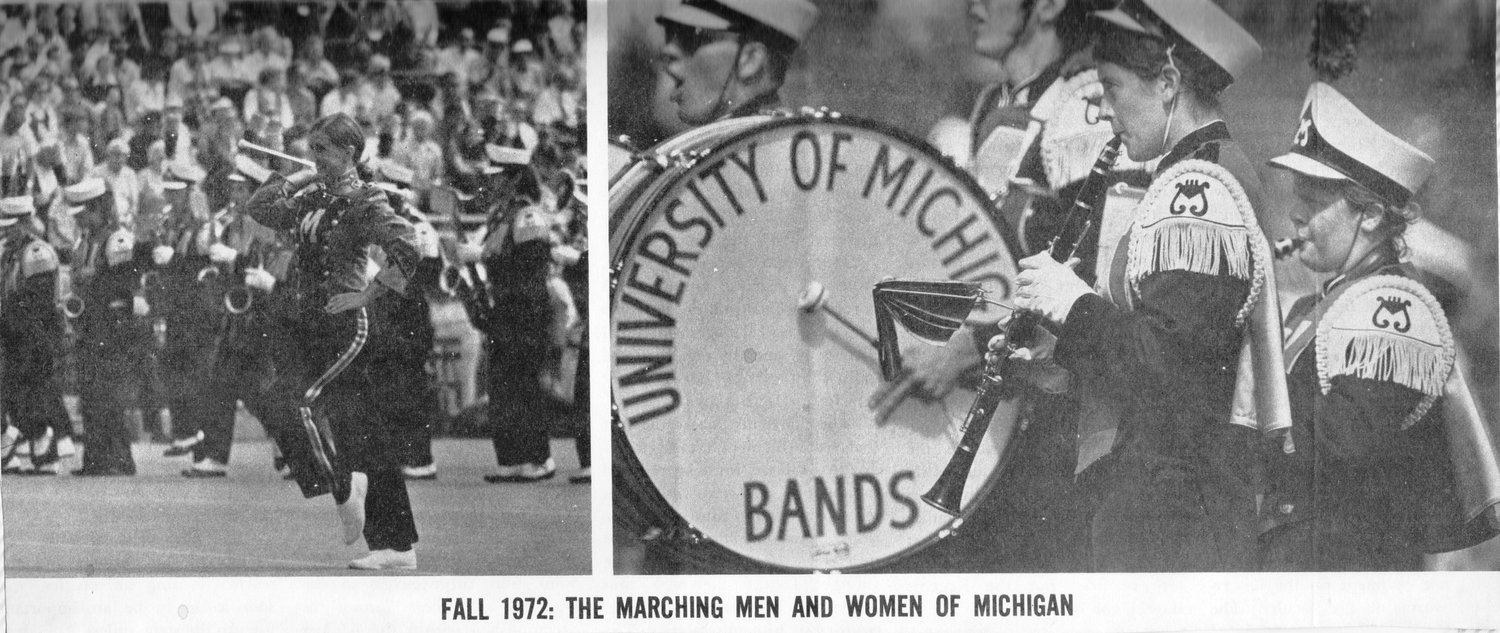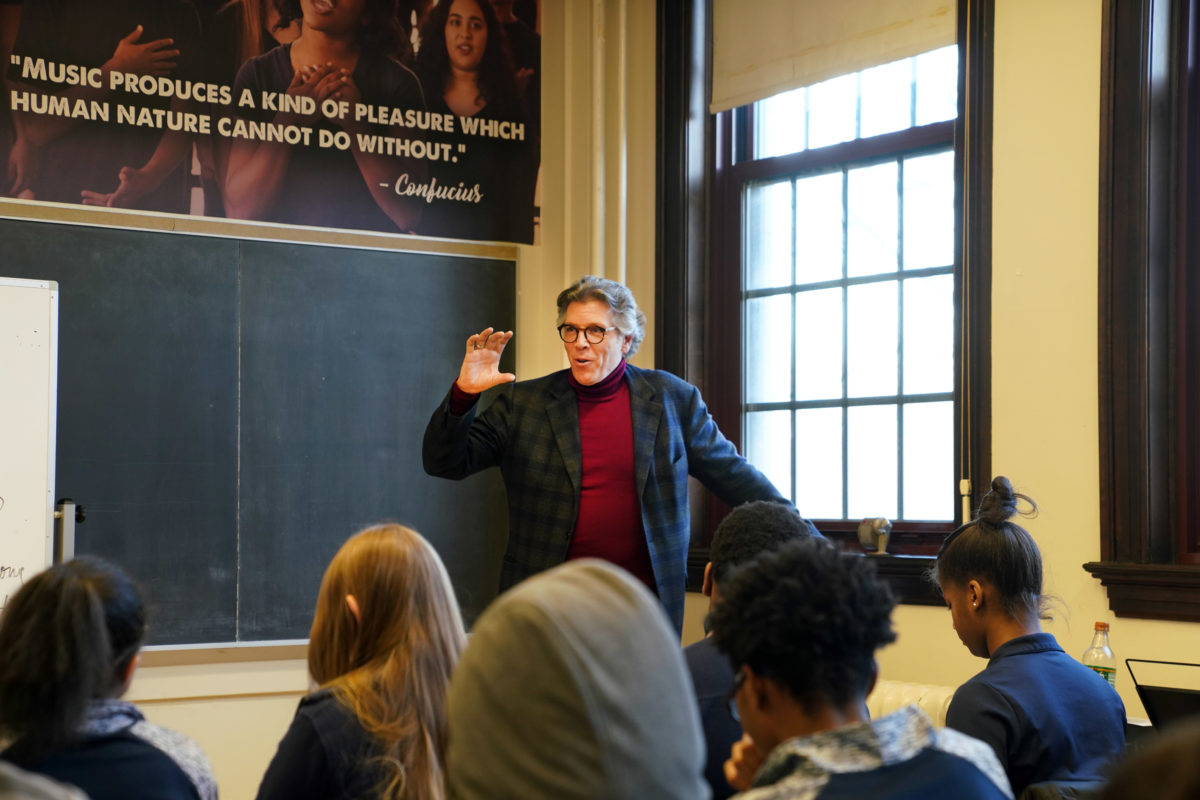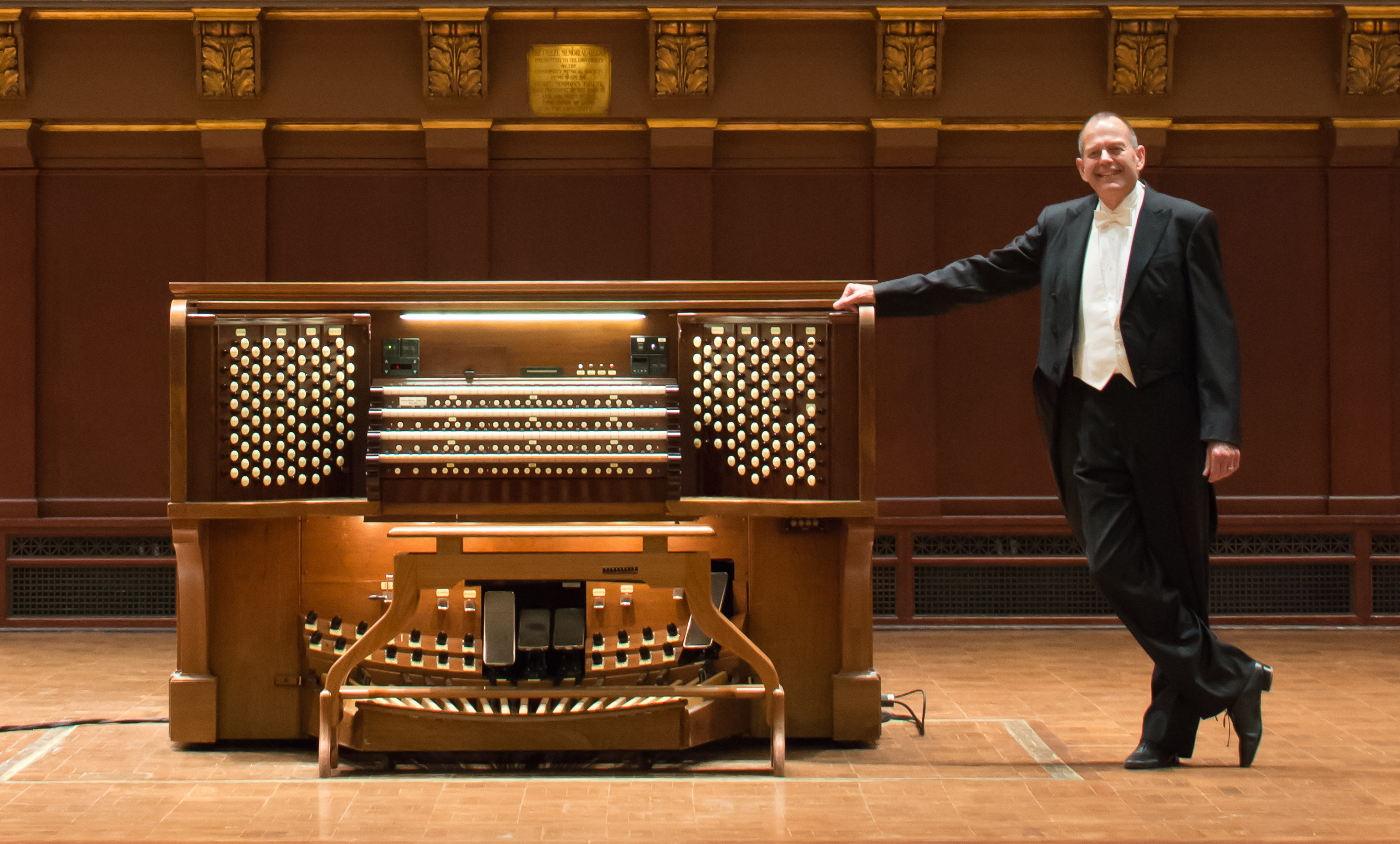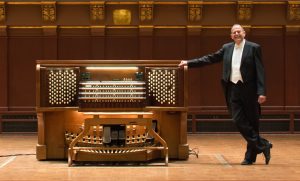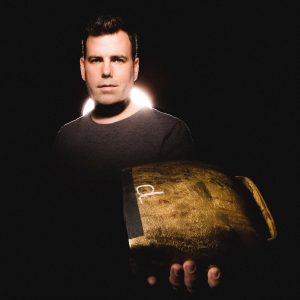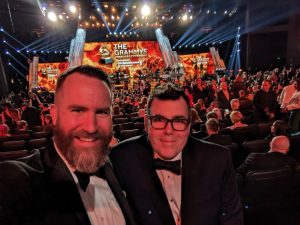Michigan Muse Winter 2023 > View from the Pond
View from the Pond
125 Years of U-M Bands
The year 2022 marked a milestone in the history of the University of Michigan band program: its quasquicentennial, also known as its 125th anniversary.
On February 22, 1897, the University of Michigan Band gave its first public performance, at the annual observance of Washington’s Birthday, a major event on campus sponsored by the Law School. This ensemble, commonly known as the University Band, soon became a popular fixture on campus, playing at spring sporting events and other functions. The following fall, the band started playing at football games, launching what would become one of U-M’s most recognized and beloved traditions. Today, the Michigan band program encompasses an array of ensembles, from the Symphony Band and Concert Band to the Michigan Marching Band and other athletic bands, dozens of chamber groups, and several campus bands for non-music majors.
For many years, the University Band continued as a student club, scrambling to raise funds for uniforms, sheet music, and anything else they needed. In 1913, the University Regents agreed to make things official and fund the band, and by the fall of 1915, the university had hired the first salaried conductor, Wilfred Wilson.
From that point on, in many ways, the history of the U-M band program came to be defined by its notable band directors. The hiring of Nicholas Falcone as band director in 1927 marked a significant turning point for the U-M band program. A conservatory-trained professional clarinet player, Falcone brought a new level of musicianship to the band, challenging the players with more difficult music, much of which he arranged himself.
In 1935, the university hired the man who would lead the program for decades and leave an indelible stamp: William D. Revelli, a young high school band director from Hobart, Indiana. An intense and dynamic leader, Revelli took the Michigan band program by storm, quickly earning a reputation for exacting standards and an expectation of perfection.
In 1971, George R. Cavender succeeded Revelli, and in 1975, former student H. Robert Reynolds, MB ’56 (music education), MM ’58 (wind instruments), was brought in as director of University Bands; Cavender continued with the program in the now-separate position of director of Michigan Marching Band until 1979. Just as his predecessors had done, Reynolds propelled the band program forward, continually raising standards and broadening the program’s mission. Leaving behind the military style embraced by previous directors, Reynolds instituted a professional model for the program.
Michael Haithcock, Arthur F. Thurnau Professor of Music, became director of bands in 2001, after having spent 23 years on the faculty of Baylor University. Just as Reynolds led the bands in a new direction in the wake of Revelli’s departure, so did Haithcock make significant contributions to the program following Reynolds’s retirement. Haithcock has approached his role with multiple objectives, including upholding the program’s high artistic standards for both musicians and conductors, contributing substantially to the band repertoire through commissions, and raising the profile of the band program.
Haithcock will retire at the end of the 2022–23 academic year, having served for 22 of the band program’s 125 years. As he prepares to hand the reins to the next director of bands, he summed up his most important goal during his tenure: “To make sure that every student who played in Symphony Band, every student who participated in Marching Band, and every student who came through our halls connected with the band program had an exemplary experience. Whatever students feel about having been connected to the band program when they walk away, that’s our legacy.”
In addition to the 125th anniversary of the U-M band program, 2022 marked a significant milestone: 50 years before, in the fall of 1972, women were allowed to join the Michigan Marching Band for the first time. The change came about thanks to the requirements of Title IX, the federal civil rights law enacted that year dictating that educational institutions receiving federal funding could not discriminate on the basis of sex. Twelve women joined the band in 1972. One of the 12 was Lynn Hansen, who was named section leader and rank leader of the tenor saxophone section. Reflecting on that season, she said, “I feel so grateful to have been one of the first to just get in there and get started and be able to pursue my dreams.”
Learn more about the 125-year history of the U-M band program.
Check out these videos of the Michigan Marching Band 2022 halftime shows celebrating 125 years of U-M bands and 50 years of women in the MMB.
To watch videos of Symphony Band performances, check out the Symphony Band YouTube channel.
Contribute to the recently established H. Robert Reynolds Scholarship in Music.
Contribute to the Haithcock Family Scholarship Fund.
Sing My Song Project Brings SMTD, Thomas Hampson, and the School at Marygrove Students Together in Song
By John Merlin Williams
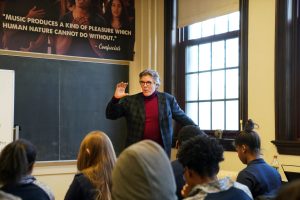
“In song, you have one of the most amazing diaries of any generation’s culture at a given time.” That statement by renowned operatic baritone Thomas Hampson is central to his vision of education and artistic research and the impetus for the Sing My Song project, a collaboration between the School of Music, Theatre & Dance (SMTD); Hampson’s nonprofit organization the Hampsong Foundation; and the School at Marygrove.
Launched in 2019, the School at Marygrove represents a groundbreaking collaboration between the U-M School of Education and Detroit Public Schools. In a visit to the School at Marygrove during its first year, Hampson, along with Mark Clague, SMTD professor of musicology and entrepreneurship & leadership and associate dean for collaborations and partnerships, and Christie Finn, managing director of the Hampsong Foundation, met with students enrolled in the course Children in Peril, taught by Jane Jordan. The class examines the history of and consequences for enslaved children and indigenous children taken from their families, going back to the early 18th century in Africa, Europe, and the Americas.
Struck by the powerful subject matter tackled by Jordan’s students and their responses to it, Clague and Finn proposed a song-crafting project involving the Marygrove students, SMTD, and the Hampsong Foundation. Thus began Sing My Song in early 2022 after a delay because of the pandemic.
Sing My Song was a joint effort between the students in the Children in Peril class and SMTD graduate students Alfredo Cabrera (DMA, composition) and Nicholas Felder (MA ’22, composition) to create a new composition. Jordan’s students provided the words in the form of six-word memoirs they had written, reflecting on the lives of those they had read about in class and on their own lives as well. Then Cabrera and Felder, working closely with the Marygrove students, translated their words into a complex and sensitive expression in music and song.
The project culminated in the Marygrove students visiting U-M’s North Campus and participating in a professional-level recording session in the Digital Media Commons Audio Studio in the James and Anne Duderstadt Center. There, each student gave a spoken-word performance of the six-word memoirs they had written. Those vocal tracks became the lyrics of the musical composition created by Cabrera and Felder.
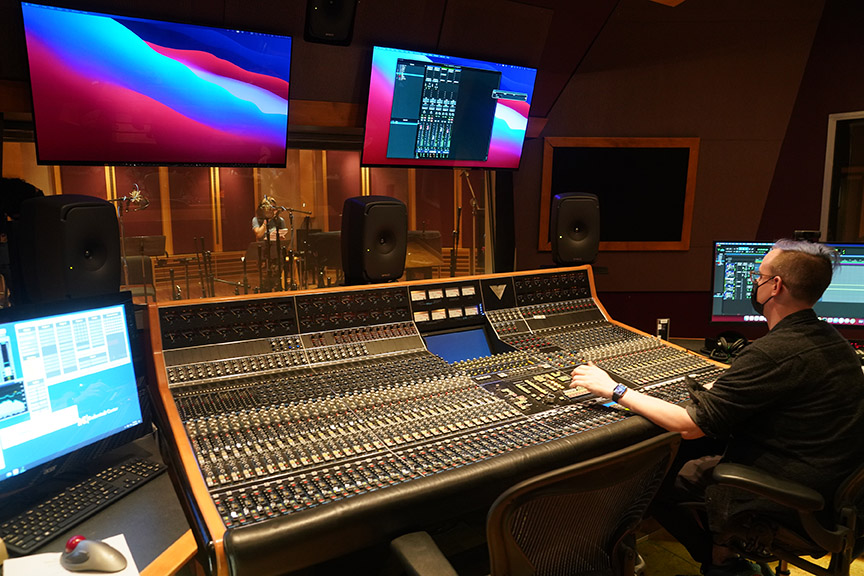
“The visit and seeing the areas in the Duderstadt Center ended up being transformative for many of the kids,” observed Jordan. “Also the experience of just being at the U-M. The kids were saying ‘I can see myself being here. I can see myself as part of this community.’ Going to college for a lot of kids is extremely daunting if you’re not exposed to it. Seeing the possibilities they could see for themselves, that it can include college, when maybe they’ve never even considered it – I didn’t expect that would be one of the benefits of this whole experience.”
Listen to the compositions by Nicholas Felder, Alfredo Cabrera, and the students from the School at Marygrove.
Access an expanded version of this article.
The “Rich Variety of Bach’s Genius”: James Kibbie Performs the Entire Canon of Bach Organ Works
As he prepares to retire from the School of Music, Theatre & Dance (SMTD) this spring, James Kibbie – longtime Department of Organ chair and university organist – is in the midst of a nearly year-long, colossal task: performing J.S. Bach’s entire organ canon, 281 works, in a series of 18 free concerts. “This series is a big ‘thank you’ to the university and community for the extraordinary opportunity of allowing me to make the organ department my life’s work these past 42 years,” Kibbie said.
Seventeen of the performances, which began on September 11, 2022, are taking place in Blanche Anderson Moore Hall in the Earl V. Moore Building, home of the Marilyn Mason Organ, named for the beloved former organ professor. On April 2, 2023, the 18th and final concert of the series will take place in Hill Auditorium, where Kibbie will perform on the famous Frieze Memorial Organ.
For all of the recitals, Kibbie has endeavored to construct audience-friendly programs. “Each was planned as a complete unit,” he said, “so that someone attending just one or two concerts will still experience the rich variety of Bach’s genius.” All of the concerts are taking place on Sunday afternoons at 4 p.m. and are livestreamed.
“This concert series is something that only James can do,” said one of Kibbie’s former students, Edward Maki-Schramm (MM ’93, DMA ’99), who is now the organist/choirmaster at Christ Church Detroit, the conductor/artistic director of the Community Chorus of Detroit, and a senior major gift officer at the Detroit Institute of Arts. “It shows us what kind of legacy he is leaving: a supreme player and interpreter of our most demanding repertoire, and a student’s best ally for mastering these works.”
Kibbie is a renowned authority on the organ music of Bach and is in constant demand as a Bach recitalist and clinician. His career as an organist has taken him around the world, including performances at the Cathedral of Notre Dame in Paris, the Royal Festival Hall in London, Dvořak Hall in Prague, and Lincoln Center in New York. He received the Grand Prix d’Interprétation at the prestigious International Organ Competition of Chartres, France, and is the only American to have won the International Organ Competition of the Prague Spring Festival in the former Czechoslovakia. He also has an extensive discography, and his performances have been broadcast on radio and television in the United States, Canada, and Europe.
While his illustrious performance career has been and continues to be deeply fulfilling, it is matched by his work as an organ professor at SMTD. He joined the faculty in 1980 while studying for his DMA (’81), after earning bachelor’s and master’s degrees from North Texas State University.
In 2000, Maki-Schramm created a scholarship in Kibbie’s name and led a fundraising campaign to endow it. Deeply honored to have a scholarship in his name, Kibbie has witnessed the impact it has made over the last 20 years. Organ scholarships, he noted, are vital to the success of the program: “We must continue to bring the finest organists to U-M regardless of their economic resources.” He hopes the Bach concert series will highlight the importance of increasing scholarship support for students.
Make a donation to the James Kibbie Endowed Scholarship Fund for organ students.
Access an expanded version of this article.
The SMTD Percussion Ensemble Goes on Tour and Earns a GRAMMY Nom: A Q&A with Doug Perkins
It’s been a busy few months for the SMTD Percussion Ensemble and Doug Perkins, associate professor of music and director of percussion. They went on an East Coast tour during the summer of 2022, followed by the September release of an album they had performed on: the first-ever recording of Sila: The Breath of the World, by award-winning composer John Luther Adams. In collaboration with the Department of Chamber Music, several SMTD faculty, and others, the ensemble recorded the piece primarily in Hill Auditorium in March 2021, with Perkins as conductor. The record was mixed in New York City in Dolby Atmos (a surround-sound technology), resulting in a piece that, as Perkins noted, “is an immersive sonic meditation on the world around us.”
On November 15, 2022, Perkins and the Percussion Ensemble learned that the album was nominated for a GRAMMY Award for Best Orchestral Performance.
What can you tell us about the U-M Percussion Ensemble tour this past summer?
In summer of ’22, the Percussion Ensemble went on tour out East to premiere a piece by Michael Gordon called Field of Vision. This is a large-scale piece for 36 percussionists that’s played outside in various places.
The Percussion Ensemble worked over the course of the whole school year with Michael, workshopping the piece. The Percussion Ensemble worked on various iterations and suggested instruments; we built things and tried things and spread out in front of the Moore Building. And then, thanks to some generous funding by the school and through a grant, we were able to hit the road.
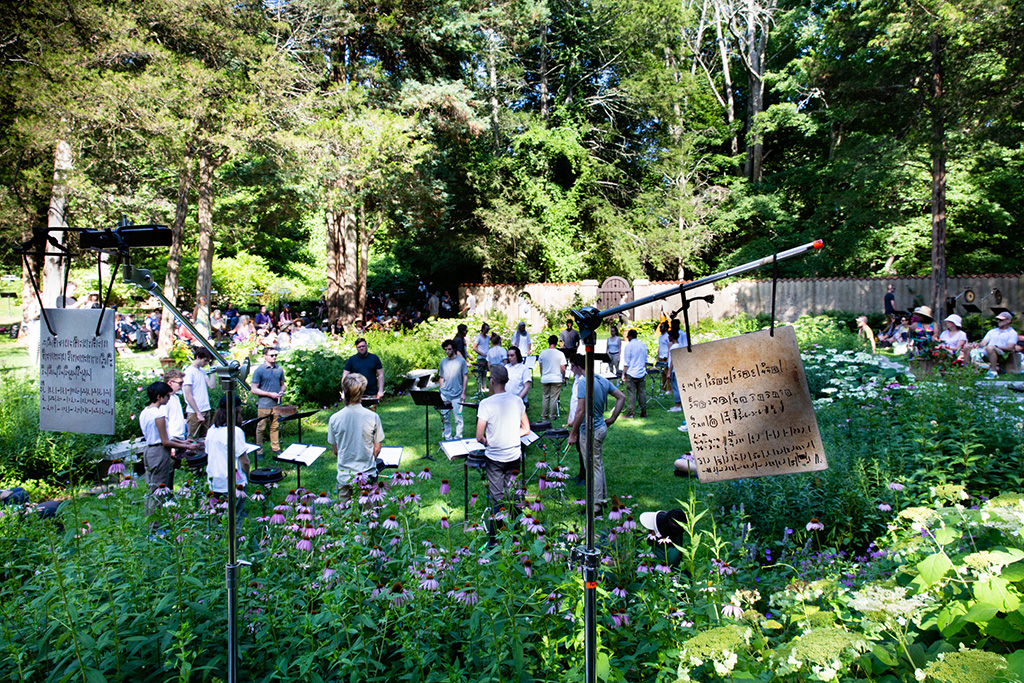
We did this piece in collaboration with Sō Percussion Summer Institute. Sō Percussion is a quartet I founded back in 1999, and they run a summer institute at Princeton. About 20 members of our ensemble went, and then the rest of the ensemble was filled out by participants from around the country who were at the institute. We workshopped for a few days at Princeton and premiered the piece at the Caramoor Summer Music Festival in Katonah, New York, just outside of New York City. Then we went up to a place called PS21 in Chatham, New York, which is a really stunning outdoor venue for new dance and music. And then we finished off at MASS MoCA in North Adams, Massachusetts, at the Bang on a Can LOUD Weekend summer festival.
Then we also did a recital of some smaller works indoors with a Percussion Ensemble quartet, featuring a new piece by Alexis Lamb, who is an SMTD DMA composer and a percussionist. She came on tour with us, and we were also able to feature her music.
What was the process for making the recording of John Luther Adams’s Sila: The Breath of the World?
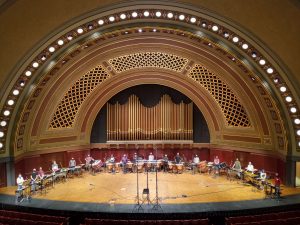
Similar to the Michael Gordon piece, Sila: The Breath of the World is an immersive piece; it’s meant to fill out a space. So even when you would normally perform it, performers would be 6 to 10 feet apart at least. It’s a project that was perfect for the COVID era. For years John Luther Adams and I had talked about recording the piece, and we weren’t sure that it would be possible. But literally in one of those silly brainstorm moments, we were talking and realized that Hill Auditorium was not being utilized, and the performers needed a space to spread out, and we could record it as we’ve always wanted to record it.
We got a UMOR [U-M Office of Research] grant for this project, and three months later we were in Hill making it happen. We recorded it to be immersive, so we had way too many microphones pointed at the ceiling and facing backwards. We had mics pointing in all directions of Hill to really pick up the image of the musicians in space.
We were able to record immersively at Hill and then work with Dolby Atmos to make a truly immersive recording. We were able to do something really unique and special.
We went down into the PAT [performing arts technology] studios when the record came out, and we were able to listen to it in their surround array. So all the students laid on the floor and we had a really fun, chill listen to the piece as it was intended, which was cool.
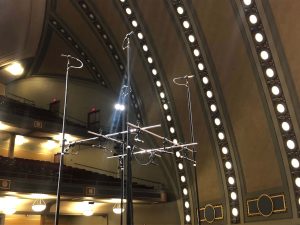
This project was a collaborative effort – who else from SMTD was involved?
The recording features the Percussion Ensemble and Matt Albert [associate professor and chamber music chair] and the Department of Chamber Music. It also features other SMTD faculty – of course Ian Antonio [assistant professor of music, percussion] was involved with the Percussion Ensemble, and Nancy King [professor of music, oboe] and Bill King [lecturer, chamber music] both played on the record. Ben Thauland, assistant director of student affairs, played trumpet. And then a bunch of alums played on the record with us too. We also had some new music VIPs – like the JACK Quartet and the Crossing Choir.
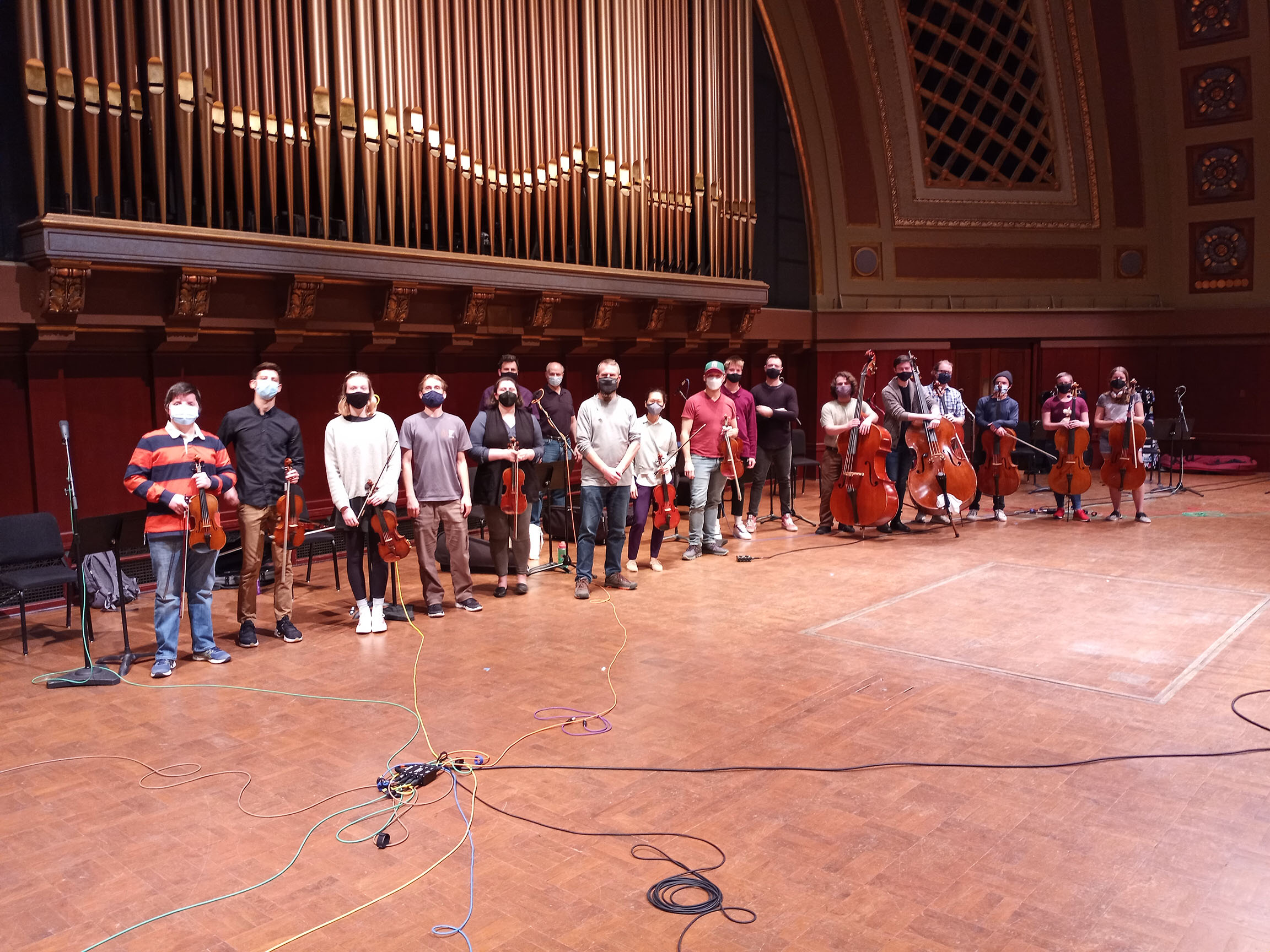
Congratulations on the GRAMMY nomination for the recording of Sila: The Breath of the World. Have you been nominated for a GRAMMY before? How did you react when you heard the news?
This is my first, so it’s really exciting and genuinely surprising. When I found out, we were in a Percussion Ensemble rehearsal, with Jason Treuting from Sō Percussion Zooming in with us. I was trying to put the GRAMMY nominations out of my mind. Then Matt Albert, who collaborated on the project, texted me. I calmly excused myself to the hallway to call Matt, and then he told me about the nomination. I came back into the room and freaked out a little bit. It was fun that Jason was there – he’s a lifelong friend from college. Even more fun for me was seeing our students when they realized that this weird recording they made with their teacher got nominated for a GRAMMY. I think they were all proud and freaking out too.
What’s next for you and the Percussion Ensemble?
Field of Vision was a big hit, so this summer we’re going to hit the road again, performing at a couple of festivals in Chicago and New York. We also have plans to record Field of Vision in the coming year. We’ve taken part in a second record with John Luther Adams that should come out in the next year or two. There are so many things the students are doing to be proud of.

